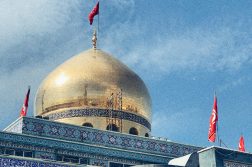‘We are not saying the Tatmadaw [the Burmese military]will seize power. We are not saying it won’t, either,’ were the clarifying words of Min Tun, a spokesperson for the Tatmadaw on 27th January 2021, a week before the new Parliament was to be sworn in. The National League of Democracy (NLD), under Aung San Suu Kyi, had won a landslide victory in the November elections, but there were rumours a coup was going to take place. Baseless accusations of voter fraud had been made by the Tatmadaw, who had governed Myanmar up to that point.
On 1st February, the military took power, arrested senior figures in the NLD and other critics, limited cell service and internet across the country and handed power to the Senior General, Min Aung Hlaing, and his 11-person State Administration Council.
By 21st April, the death toll had risen to 739, thousands of people had been detained, and thousands of arrest warrants had been issued. These numbers are only going up as the situation intensifies.
There are two important questions to ask:
Why?
This isn’t an idle question. There has been confusion, both internationally and within Myanmar, as to the motives of this coup. It has been described by one journalist as ‘the stupid coup‘ because there was no apparent need to seize power.
The 2008 constitution, which was written by the Tatmadaw, left much of their former control intact. They have a guaranteed quarter of seats in Parliament, giving them a veto on major reform, and they retain control over immigration and defence. There’s even a provision for a state of emergency in which power would be handed to the military – the law that the Tatmadaw claim makes their actions constitutional.
One explanation has been General Min Aung Hlaing is trying to protect his and his family’s financial interests from investigation. By law, he is required to retire at 65, which would mean leaving his post in July. This would expose him to all manner of scrutiny, not just for his alleged profiteering, but also for his role in the ethnic cleansing of Rohingya Muslims by the Tatmadaw.
Another explanation is that the Tatmadaw as a whole is trying to preserve its central role in politics. While they have a huge amount of constitutional power, what they don’t have is the power to appoint the Senior General’s successor – that rests with the President. The possibility of a reform-minded commander-in-chief being appointed isn’t off the cards, and there is continuing support for the democracy movement in Myanmar.
It could well be both; not only a cynical power-grab by a corrupt General, but also a rational move by the military against more democratic reform.
What’s next?
More than two months on from the coup and the situation has intensified, as one Burmese journalist warned there was a serious risk of ‘civil war’ on the 2nd of April. Hundreds have been killed, thousands are being arrested – in the states of Kachin and Karen, there have been airstrikes and escalating violence between the Tatmadaw and armed ethnic groups (EAOs).
While this is a dangerous situation, we shouldn’t be totally pessimistic for Myanmar’s democracy movement.
On the 16th of April, deposed lawmakers in the Committee Representing Pyidaungsu Hluttlaw (CRPH), a government-in-exile, finally announced the formation of a ‘national unity’ government, with anti-coup protesters and ethnic minority leaders. This has been a month in the making; in March, they removed the ‘terrorist’ designation from the armed groups that have been fighting the Tatmadaw for decades, and declared the 2008 constitution void.
Both of these are moves that make civil conflict likely. But one of the most respected voices in the democracy movement, Min Ko Naing, doesn’t feel that’s a bad thing. In an interview with Radio Free Asia, he said that the CRPH shouldn’t just be building a new state, but should be working on the ‘people’s security and their defence’. This would involve working with armed groups, and potentially forming a new, anti-coup, federal army.
‘The dictators will not have good days forever.‘
Having spent most of his life as a pro-democracy activist – either imprisoned or on the streets – he knows Myanmar’s transition to democracy intimately, as well as what it needs, and what its shortcomings have been. There’s a feeling that Myanmar’s democracy movement has asked nicely and protested peacefully, and now it’s trying something else.
Dozens of members of the All-Burma Federation of Student Unions (ABFSU) – the group Naing was chair of in 1988, during the uprising – were arrested last November for their criticism of not only the military, but the failure of the NLD to secure real democracy. Many of the repressive elements of the past were left in place, including the Tatmadaw’s violent policies towards ethnic minorities in Myanmar and continued political arrests.
The ABFSU is the same organization that emerged in the struggle against British rule, and then against Japanese occupation during the Second World War. It was a leading group in the 1988 uprising that briefly cast off military rule and saw elections that were overturned by a return to military rule in 1990.
The revolutionary role of students and young people can be seen in Myanmar today. Young people have formed the back-bone of ‘guerilla protest’, such as medical students being involved in protests against the coup in Mandalay and Yangon, in support of the strikes of medical workers and teachers.
So in Myanmar, the future holds more conflict, strife and violence before the situation improves.
Rather than the peaceful movements of the past that won the 2008 constitution, the democracy movement in Myanmar seems to be entering a more militant struggle, this time for state power, not concessions. The outcome is in the balance.
That might be cause for cautious optimism.



